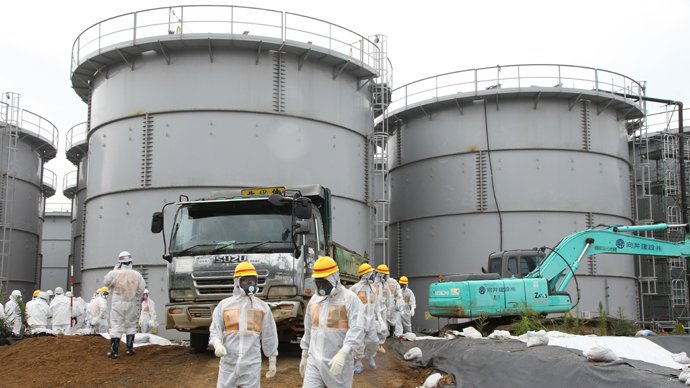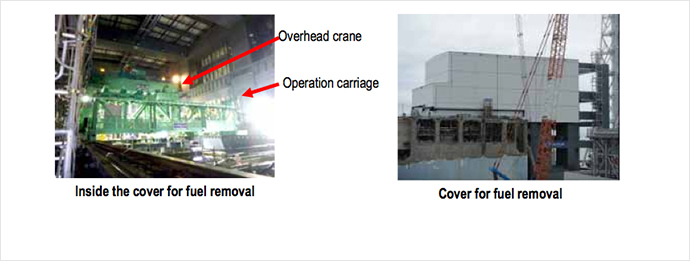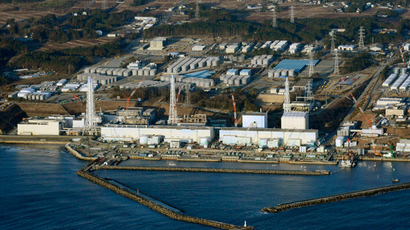Fukushima readies for dangerous operation to remove 400 tons of spent fuel

Fukushima operator TEPCO is getting ready for its toughest and the most dangerous clean-up operation. In November it will try to remove 400 tons of spent fuel from plant’s Reactor No. 4. But even a little mistake may result in a new nuclear disaster.
The operation is scheduled to start in the beginning of November
and be completed by around the end of 2014.
Under normal circumstances, the operation to remove all the fuel
would take about 100 days. TEPCO (Tokyo Electric Power Co)
initially planned to take two years, but reduced the schedule to
one year in recognition of the urgency, as even a minor
earthquake could trigger an uncontrolled fuel leak.
During this period TEPCO plans to carefully remove more than
1,300 used fuel rod assemblies, packing radiation 14,000 times
the equivalent of the Hiroshima nuclear bomb, from their cooling
pool.
The base of the pool where the fuel assemblies are situated is 18
meters above ground and the rods are 7 meters under the surface
of the water.
TEPCO’s first task is to remove the debris from the Reactor No. 4
fuel pool.
Then, one by one, the fuel rods will be removed from the top
store of the damaged building using a crane suspended above the
crippled reactor.

Previously a computer-controlled process, this time it has to be
done completely manually. And this is what makes this removal
operation extremely dangerous.
The fuel rods must be kept submerged and must not touch each
other or break.
“The operation to begin removing fuel from such a severely
damaged pool has never been attempted before. The rods are
unwieldy and very heavy, each one weighing two-thirds of a
ton,” fallout researcher Christina Consolo earlier told RT.
Should the attempt fail, a mishandled rod could be exposed to air
and catch fire, resulting in horrific quantities of radiation
released into the atmosphere. The resulting radiation will be too
great for the cooling pool to absorb as it simply has not been
designed to do so.
In the worst-case scenario, the pool could come crashing to the
ground, dumping the rods together into a pile that could fission
and cause an explosion many times worse than in March 2011.
“The worst-case scenario could play out in death to billions
of people. A true apocalypse,” Consolo said.
Reactor No. 4 contains 10 times more Cesium-137 than Chernobyl
did. This lets scientists warn that in case of another nuclear
disaster, it will be the beginning of the ultimate catastrophe of
the world and the planet.
“It will be one of the worst, but most important jobs anyone
has ever had to do. And even if executed flawlessly, there are
still many things that could go wrong,” Consolo said.
The World Nuclear Report, released in July 2013, said “the
worst-case scenario” will require evacuation of up to 10
million people within a 250-kilometer radius of Fukushima,
including a significant part of Tokyo.
Although some experts are skeptical, TEPCO is confident the
operation will be a success. Last year two fuel rods were
successfully removed from the pool in a test operation, but back
then rod assemblies were empty and posed a far smaller threat.
The operation will be just one installment in the decommissioning
process for the plant, and is forecast to take about 40 years and
cost $11 billion.
TEPCO, responsible for the clean-up, is struggling to cope with
the aftermath of the nuclear disaster, but with the crisis over
radiation-contaminated water at the plant, it has been criticized
for its ad hoc response to the disaster. In August TEPCO pleaded
for overseas help to contain the radioactive fallout, after 18
months of trying to control it internally.
The Japanese government was also ordered to take a more active
role in controlling the overflow of radioactive water being
flushed over the melted reactors in Units 1, 2 and 3 at the
plant.
Three of the Fukushima plant’s nuclear reactors were damaged by
an earthquake-triggered tsunami on March 11, 2011, which led to a
nuclear disaster. The plant has been accumulating radioactive
water ever since. The government imposed a 20-kilometer ‘no-go’
zone around the plant area.














